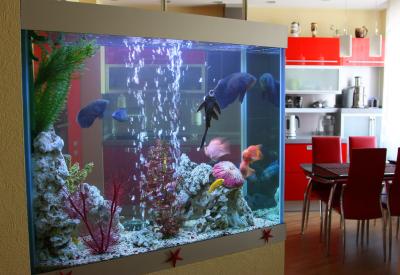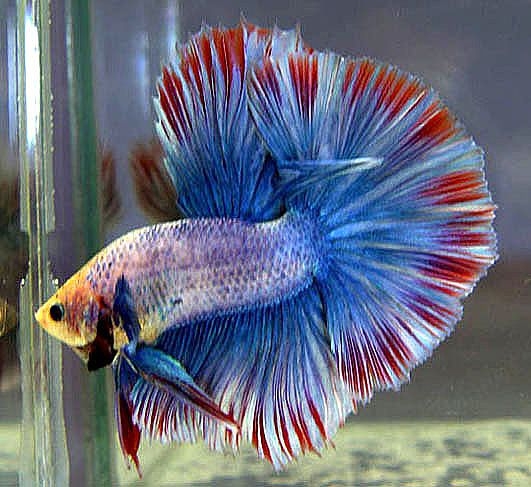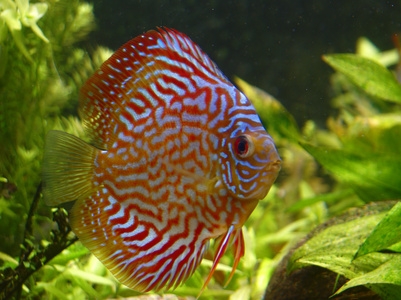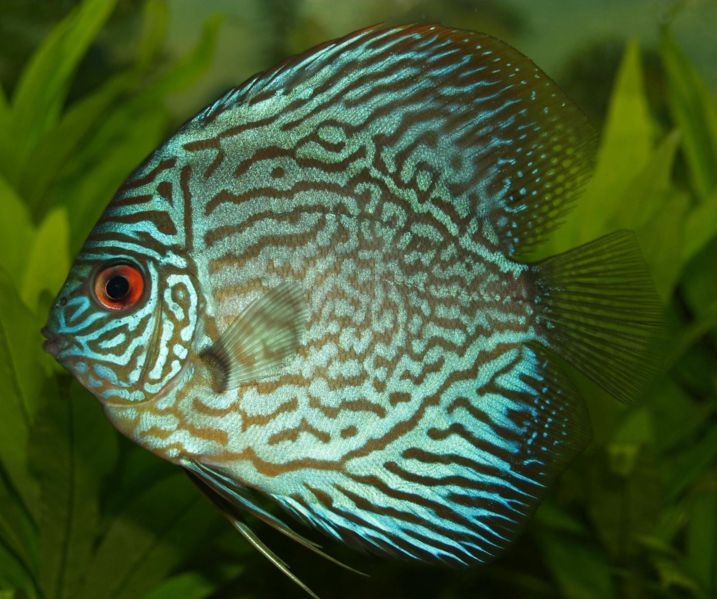
Scientific Name: Metriaclima zebra (formerly Pseudotropheus zebra)
Breeding Method: Mouthbrooder
Ease of Breeding: Moderate
Introduction: This cichlid, one of the first mbuna in the trade, comes in many color morphs, including electric blue, red, orange, and gold. There is also an albino strain. They are extremely easy to spawn, and will do so in any tank set up for Malawi cichlids. However, they readily crossbreed with other species, so it is best to keep and breed them only in species or spawning setups that include one male and at least two females.
Sex Differences: Males are much more colorful than females, and also have large round dots on their anal fins.
Water Conditions: Hard and alkaline, with a dH of 10 to 20 and a pH of between 7.5 and 8.5; fish kept in the higher pH often yield more fry. Temperature should be in the mid-70s. Mbuna like clean water, so keep up with water changes.
Equipment: Tank should be a minimum of 30 gallons, but bigger would be even better, since these fish are aggressive and the females need room to get away from the males. Furnish with heater, filter, and plenty of rockwork and PVC pipe to provide hiding places for both females and fry.
Conditioning and Triggers: Mbuna are primarily herbivores, so conditioning should include plenty of vegetable matter, such as Spirulina, lettuce, peas, and cucumbers. (Some breeders recommend avoiding live food, particularly blood worms, which are associated with the potentially lethal problem known as Malawi bloat.) A massive water change will sometimes trigger spawning.
Spawning: The male stakes out a territory, and when a female is ready to spawn, she approaches. He shakes and displays and the two circle one another; they may act aggressively. When ready, the female lays a few eggs and then picks them up in her mouth. The male displays his anal fins, which are covered with distinctive marking called "egg spots" because they so closely resemble roe that even the female is fooled by them. She prods the spots, trying to pick them up; scientists theorize that this stimu¬lates the male to release sperm, fertilizing the eggs already in her mouth. This process may be repeated numerous times over the course of an hour or so. When spawning is complete, it is best to transfer the female to a tank of her own, so she can incubate the fry in peace.
Brood Size: Up to 50, although smaller broods are more common.
Fry Care: The female incubates the fry until they are free swimming, three to four weeks after spawning. At this time, remove the mother to a tank of her own and feed her well, as she will be emaciated and weak from going nearly a month without eating. Feed fry on baby brine shrimp and microworms until they are at least an inch in size. By the time they're a month old, you can also feed pulverized flake food formulated for herbivores.
Species with Similar Breeding Habits: Most mbuna, including lodotropheus sprengerae; Labeotropheus trewavasae; Labeotropheus fuelleborni; Labidochromis caeruleus; Melanochromis auratus; and Melanochromis johannii.
 List of Aggressive Tropical Freshwater Fish
List of Aggressive Tropical Freshwater Fish
List of Aggressive Tropical Freshwater Fish
List of Aggressive Tropical Freshwater Fish
 How to clean out a fish tank for a beta fish
How to clean out a fish tank for a beta fish
How to clean out a fish tank for a beta fish
How to clean out a fish tank for a beta fish
 What Causes Fish to Die in a Pond?
What Causes Fish to Die in a Pond?
Wha
What Causes Fish to Die in a Pond?
What Causes Fish to Die in a Pond?
Wha
 Discus Fish Care & Feeding
Discus Fish Care & Feeding
Discus
Discus Fish Care & Feeding
Discus Fish Care & Feeding
Discus
 What to Do About Bully Fish in an Aquarium?
What to Do About Bully Fish in an Aquarium?
What to Do About Bully Fish in an Aquarium?
What to Do About Bully Fish in an Aquarium?
Copyright © 2005-2016 Pet Information All Rights Reserved
Contact us: www162date@outlook.com